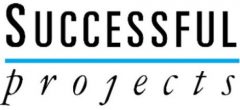Project Quality Management
Project managers lead quality management planning, controlling, and monitoring to help meet (or exceed) the customer’s expectations by way of deliverables and/or activities performed to produce those deliverables. There are many quality theories and approaches that are helpful for project managers to understand and utilize when appropriate.
Quality is…
“Quality in a service or product is not what you put into it. It is what the client or customer gets out of it.” – Peter Drucker
The Quality Gurus
Four of the most influential quality gurus are Deming, Juran, Crosby, and Taguchi. View this chart comparing their quality philosophies. Also instrumental in qualtiy contributions are Ouchi and Herzberg.
OUCHI – Theory Z
William Ouchi developed Theory Z after making a comparative study of Japanese and American management practices. Theory Z is an integrated model of motivation. Theory Z suggests that large complex organizations are human systems and their effectiveness depends on the quality of humanism used. A type Z organization has three major features—trust, subtlety, and intimacy.
Herzberg Theory
Frederick Herzberg created a two-dimensional theory of factors affecting people’s attitudes about work involving 1) hygiene factors, and 2) motivators. He concluded that factors such as decent company policies, good supervision, satisfactory working conditions, and good salary are hygiene factors rather than motivators. According to Herzberg’s theory, the absence of hygiene factors can create job dissatisfaction, but their presence does not motivate or create true satisfaction.
Kaizen
Kaizen is a term that is often used in relation to quality improvement in the manufacturing environment, but which is also applicable to project quality improvement. Kaizen is supposed to operate based on three principles:
- Consider the process and the results (not results-only) so that actions to achieve effects are surfaced;
- Systemic thinking of the whole process and not just that immediately in view in order to avoid creating problems elsewhere in the process; and
- A learning, non-judgmental, non-blaming approach and intent will allow the re-examination of the assumptions that resulted in the current process.
Kaizen – is a daily activity, the purpose of which goes beyond simple productivity improvement. It is also a process that, when done correctly, humanizes the workplace, eliminates overly hard work and teaches people how to perform experiments on their work using the scientific method and how to learn to spot and eliminate waste in business processes.
People at all levels of an organization can participate in kaizen – also external stakeholders when applicable. It usually involves a small group in improving their own work environment and productivity. This group is often guided through the kaizen process by a line supervisor; sometimes this is the line supervisor’s key role.
Qualitative vs Quantitative Data
Qualitative deals with descriptions. It can be observed but not measured. It includes subjective descriptions including perceptions of good/bad, appearance, textures, smells, tastes, sounds, etc. Qualitative aspects can be observed but not measured. Qualitative can be easily remembered as relational to QUALITY.
Quantitative deals with numbers. It involves things which can be measured in counting, height, area, volume, weight, speed, time, temperature, humidity, sound levels, cost, members, ages, etc. Quantitative can be easily remembered as relational to QUANTITY.
Pareto Diagrams
Pareto Diagrams are histograms, ordered by frequency of occurrence, that show how many results were generated by type or category of identified cause. The project team should take action to fix the problems that are causing the greatest number of defects first. Pareto diagrams are conceptually related to Pareto’s Law, which holds that a relatively small number of causes will typically produce a large majority of the problems or defects.
Quality Audits
When project deliverables are repeatedly not being accepted the first time they are turned in, or when the control charting shows that a process is “out of control”, it is time for the project manager to initiate a quality audit. The objective of a quality audit is to identify inefficient and ineffective policies, processes, and procedures in use on the project. The subsequent effort to correct these deficiencies should result in a reduced cost of quality and an increase in the percentage of acceptance of the product or service by the customer or sponsor within the performing organization.
Mean, Median & Mode
Mean: The average.
Median: Sort the values from smallest to largest. If there is an even number of values, the median is the average of the two middle numbers. If there is an odd number of values, the median is the one in the middle of the pack.
Mode: The value that occurs most often.
Standard Deviation
Another term that often is used along with these is standard deviation, which is represented by the symbol σ and it basically shows how much variation there is from the mean.
Sigma Values
+/- 1 sigma 68.26% (68.3)
+/- 2 sigma 95.46% (95.5)
+/- 3 sigma 99.73% (99.7)
+/- 6 sigma 99.99% (99.99)

